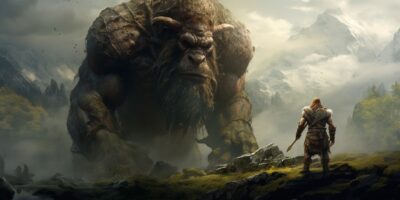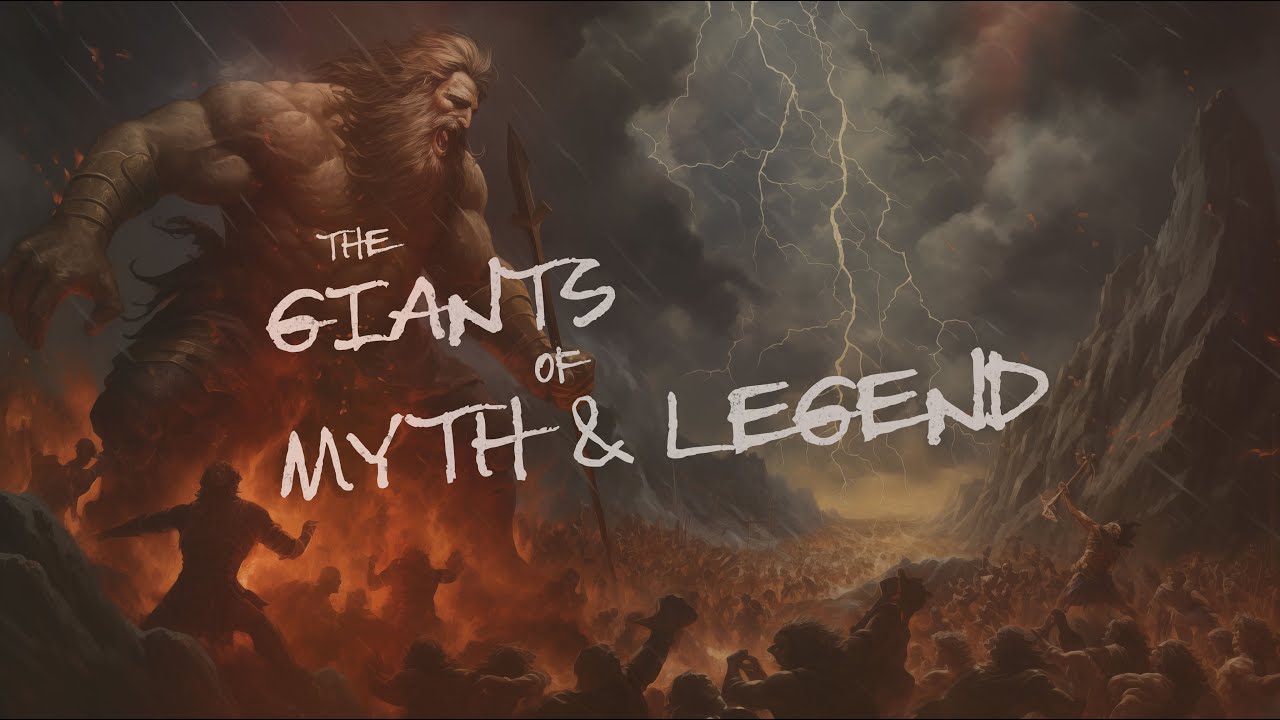The image of colossal beings, often called Titans, has long fascinated humans. These “Huge Titans” are depicted as mighty giants who wield unimaginabl
The image of colossal beings, often called Titans, has long fascinated humans. These “Huge Titans” are depicted as mighty giants who wield unimaginable power and command awe and fear. From ancient myths to modern science and pop culture, Titans capture the imagination like few other symbols can.
This article explores the origins of the Huge Titan concept, their role in mythology, their representation in nature and science, and their continuing influence in culture and media today.
Must visit: trustedhealthcare

The Birth of the Titans in Mythology
The term “Titan” originates from Greek mythology, describing a race of enormous deities who ruled before the Olympian gods. They were the children of primordial sky god Uranus and earth goddess Gaia. Their vast size and power represented primal forces of nature and cosmic creation.
The Titans’ Role in Greek Myth
The Titans included figures like Cronus, Rhea, Oceanus, and Hyperion. They personified elements such as time, earth, the ocean, and the sun. The most famous story involving Titans is the Titanomachy—the battle between the Titans and the Olympian gods led by Zeus.
The Titanomachy symbolizes the overthrow of an older, chaotic order by a new, structured one. Despite their defeat and imprisonment in Tartarus, the Titans’ legacy as embodiments of raw, untamed power endures.
Giants in Other Mythologies: Universal Archetypes
While Greek Titans are the best-known, many cultures have myths about huge giants or primordial beings resembling Titans.
Norse Giants: The Jötnar
In Norse mythology, the Jötnar or giants are powerful beings who live in Jotunheim. They frequently clash with the Aesir gods like Odin and Thor. Some giants are destructive forces, while others embody wisdom and ancient knowledge, paralleling the dual nature of Titans as creators and destroyers.
Hindu Mythical Giants: Asuras and Daityas
In Hindu cosmology, Asuras and Daityas are demon-like beings often at odds with the gods (Devas). They are mighty warriors and cosmic forces, representing the ongoing struggle between good and evil, light and darkness—a theme common to the Titan myths.
Biblical Giants: The Nephilim
The Nephilim, mentioned briefly in the Bible, are described as giants born from unions between “sons of God” and humans. Although their exact nature is debated, they have been a source of fascination for centuries, representing a mysterious link between the divine and mortal worlds.
Symbolism Behind Huge Titans
Beyond their physical size, Titans symbolize many universal concepts:
- Raw Power: Titans embody nature’s unstoppable, primal forces.
- Rebellion and Change: Their defiance of the Olympians represents upheaval and transformation.
- Creation and Destruction: Titans are tied to the cyclical nature of the universe—creation, destruction, and rebirth.
- Endurance: Titans signify longevity and the timelessness of natural and cosmic laws.
These themes transcend cultures and eras, making Titans a rich subject for storytelling.
The Science of Giants: Nature’s Real-Life Titans
The fascination with gigantic beings is not limited to myth. The natural world provides astonishing examples of enormous creatures that inspire awe akin to mythic Titans.
Prehistoric Giants
Dinosaurs like Argentinosaurus, which may have reached lengths of up to 130 feet and weighed over 70 tons, are among the largest creatures to have ever walked the Earth. The mighty Megalodon shark, reaching lengths up to 60 feet, ruled the oceans millions of years ago.
These prehistoric giants symbolize nature’s capacity for gigantism and power.
Modern Giants: Blue Whales and More
Today’s largest animal, the blue whale, can grow to 100 feet long and weigh over 200 tons. Despite its massive size, the blue whale’s gentle nature highlights the contrast between size and temperament, echoing the complex symbolism of Titans.
Other large animals like elephants, giraffes, and crocodiles also trigger our fascination with scale and might.
Gigantism in Humans and Animals
Gigantism, a rare medical condition, causes excessive growth in humans due to hormonal imbalances. Though individuals with gigantism rarely reach Titan-like proportions, the concept of extraordinary size continues to captivate us.
In the animal kingdom, gigantism occurs in some species, particularly in isolated ecosystems like islands or deep oceans, where evolutionary pressures allow or favor large size.
Titans in Popular Culture: From Epic Tales to Modern Media
The concept of Huge Titans remains vibrant in contemporary culture, often reimagined and reinvented.
Literature
Authors have long drawn on Titan mythology to explore themes of power and destiny. From ancient epics to modern fantasy novels, Titans often appear as formidable adversaries or cosmic forces shaping worlds.
Film and Television
Movies like Clash of the Titans bring the myths to life with spectacular visuals and action. The anime Attack on Titan reinvents the Titan as giant humanoids threatening humanity’s existence, blending horror, mystery, and political allegory.
Video Games
In gaming, Titans appear as enormous bosses, mechs, or creatures. Games like Titanfall emphasize high-tech Titans, while titles such as God of War and Shadow of the Colossus showcase myth-inspired gigantic foes.
Comics and Graphic Novels
Comics like Marvel’s Thanos, often called a Titan, depict cosmic-scale villains whose power challenges heroes on a universal scale. Titans in comics embody both mythic grandeur and personal conflict.
Psychological Appeal: Why We Love Titans
Why does the concept of Huge Titans endure?
- Awe and Fear: Titans provoke primal emotions, mixing admiration and terror.
- Overcoming Challenges: They represent monumental obstacles or powers we must understand or conquer.
- Metaphors for Life: Titans symbolize internal and external struggles, making complex emotions tangible.
- Escapism: Tales of Titans provide thrilling escape into worlds of grandeur and spectacle.
Modern Interpretations and Metaphors
Today, “Titan” is a metaphor for anything large or influential, such as a “Titan of industry” or a “Titan of technology.” This reflects the cultural embedding of Titans as symbols of greatness and dominance.
The term has become synonymous with excellence and power in various fields, from business to entertainment.
The Legacy of Titans in Art and Philosophy
Art has long captured the might and drama of Titans—from classical sculptures to contemporary digital art. These depictions emphasize themes of struggle, endurance, and transformation.
Philosophically, Titans raise questions about power, rebellion, and the nature of change. Their stories mirror human experiences of growth, conflict, and the quest for meaning.
Conclusion
Huge Titans, whether as ancient gods, mythological giants, or real-world prehistoric beasts, captivate humanity’s imagination. They embody the ultimate expressions of power, endurance, and transformation. Their stories, rooted in myth but evolving in culture, speak to universal human themes that remain relevant today.
From the skies of Olympus to the depths of the ocean and the screens of modern entertainment, Titans continue to inspire awe, fear, and wonder—reminding us of the extraordinary forces that shape our world and ourselves.
Frequently Asked Questions (FAQs)
Q1: Who were the Titans in Greek mythology?
A: Titans were primordial giant deities who ruled before the Olympian gods. They were children of Uranus and Gaia and embodied fundamental cosmic forces.
Q2: Are Titans found in other mythologies?
A: Yes, many cultures have giant figures similar to Titans, such as Norse Jötnar, Hindu Asuras, and the biblical Nephilim.
Q3: What do Titans symbolize?
A: Titans symbolize raw power, rebellion, creation and destruction, and the enduring forces of nature and cosmos.
Q4: Are there real-life creatures comparable to Titans?
A: Real-life giants include prehistoric dinosaurs and the modern blue whale—some of the largest creatures to ever live.
Q5: Why do Titans remain popular in modern culture?
A: Titans represent ultimate strength and drama, making them powerful symbols in stories about struggle, power, and survival.




COMMENTS